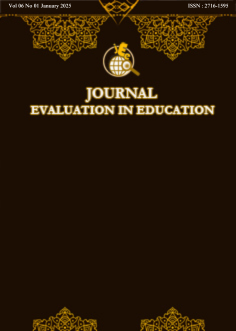The All-Seeing Algorithm: Panopticon and Surveillance of the Docudrama “The Social Dilemma”
Abstract
Purpose of the study: This study aims to analyze the concept of Michel Foucault’s panopticon in the modern digital context, as depicted in the docudrama The Social Dilemma. The research focuses on understanding the surveillance mechanisms of social media and their psychological impacts on user behavior.
Methodology: This research uses a qualitative approach with content analysis as the primary method. The object of study is the docudrama The Social Dilemma on Netflix. Data collection involves observation, documentation studies, and literature reviews from Scopus.com and other websites to identify how digital surveillance is portrayed and its effects on users.
Main Findings: The study finds that social media platforms use advanced surveillance algorithms to monitor, influence, and control user behavior. These mechanisms form a digital panopticon where users feel constantly watched, leading to behavioral adjustments. The psychological impacts include anxiety, depression, and addiction, particularly among teenagers, driven by the normalization of constant digital surveillance.
Novelty/Originality of this study: This study uniquely applies Foucault’s panopticon theory to analyze the influence of digital surveillance depicted in The Social Dilemma. The novelty of this research lies in its application of Foucault’s panopticon theory to digital platforms, providing new insights into the psychological and behavioral consequences of algorithmic surveillance. However, the study is limited by focusing on a single docudrama, which may not comprehensively represent the full spectrum of digital surveillance practices. Future research should expand on this analysis by examining broader datasets or additional media to validate these findings.
References
[2] S. Yousif Ameen and M. A. MSadeeq, “Social Media Networks Security Threats, Risks and Recommendation: A Case Study in the Kurdistan Region,” 2020. [Online]. Available: www.ijicc.net
[3] P. Steadman, “Samuel Bentham’s Panopticon,” Journal of Bentham Studies, vol. 14, no. 1, Jan. 2012, doi: 10.14324/111.2045-757x.044.
[4] J. W. Cresswell and J. D. Cresswell, “Research Design,” 2018.
[5] K. Adnani, “Metodologi Penelitian Komunikasi,” 2021.
[6] A. Rachman, (Cand)E. Yochanan, A. I. Samanlangi, and H. Purnomo, “METODE PENELITIAN KUANTITATIF KUALITATIF DAN R&D,” 2024.
[7] R. Justan and A. Aziz, “Penelitian Kombinasi (Mixed Methods),” Jurnal Ilmiah Multidisiplin, vol. 3, no. 2, 2024.
[8] J. Sarwono, “METODE PENELITIAN KUANTITATIF DAN KUALITATIF,” 2018.
[9] A. Panigrahi and Arunima De, “Dopamine manipulation and its role in effective advertising,” Journal of Management Research and Analysis, vol. 11, no. 3, pp. 192–199, Sep. 2024, doi: 10.18231/j.jmra.2024.033.
[10] J. M. Twenge, “More Time on Technology, Less Happiness? Associations Between Digital-Media Use and Psychological Well-Being,” Curr Dir Psychol Sci, vol. 28, no. 4, pp. 372–379, Aug. 2019, doi: 10.1177/0963721419838244.
[11] A. Heinz, C. Catunda, C. van Duin, T. Torsheim, and H. Willems, “Patterns of Health-Related Gender Inequalities—A Cluster Analysis of 45 Countries,” Journal of Adolescent Health, vol. 66, no. 6, pp. S29–S39, Jun. 2020, doi: 10.1016/j.jadohealth.2020.02.011.
[12] E. Coe, A. Doy, K. Enomoto, and C. Healy, “Gen Z mental health: The impact of tech and social media.” Accessed: Jun. 28, 2024. [Online]. Available: https://www.mckinsey.com/mhi/our-insights/gen-z-mental-health-the-impact-of-tech-and-social-media#
[13] M. Foucault, “Discipline and Punish The Birth of the Prison,” 1997.
[14] I. L. Stole, “Persistent Pursuit of Personal Information: A Historical Perspective on Digital Advertising Strategies,” Crit Stud Media Commun, vol. 31, no. 2, pp. 129–133, 2014, doi: 10.1080/15295036.2014.921319.
[15] J. A. Naslund, A. Bondre, J. Torous, and K. A. Aschbrenner, “Social Media and Mental Health: Benefits, Risks, and Opportunities for Research and Practice,” 2019, doi: 10.1007/s41347-020-00134-x/Published.
[16] F. Bányai et al., “Problematic social media use: Results from a large-scale nationally representative adolescent sample,” PLoS One, vol. 12, no. 1, Jan. 2017, doi: 10.1371/journal.pone.0169839.
[17] P. M. Valkenburg, “Social media use and well-being: What we know and what we need to know,” Jun. 01, 2022, Elsevier B.V. doi: 10.1016/j.copsyc.2021.12.006.
[18] S. Zuboff, “Big other: Surveillance capitalism and the prospects of an information civilization,” Journal of Information Technology, vol. 30, no. 1, pp. 75–89, Mar. 2015, doi: 10.1057/jit.2015.5.
Copyright (c) 2025 Rahma Dhian Karisma Putri, Andre Noevi Rahmanto, Sudarmo Sudarmo

This work is licensed under a Creative Commons Attribution 4.0 International License.
Authors who publish with this journal agree to the following terms:
- Authors retain copyright and acknowledge that the Integrated Science Education Journal is the first publisher licensed under a Creative Commons Attribution 4.0 International License.
- Authors are able to enter into separate, additional contractual arrangements for the non-exclusive distribution of the journal's published version of the work (e.g., post it to an institutional repository or publish it in a book), with an acknowledgment of its initial publication in this journal.
- Authors are permitted and encouraged to post their work online (e.g., in institutional repositories or on their website) prior to and during the submission process, as it can lead to productive exchanges and earlier and greater citation of published work.









.png)
.png)





